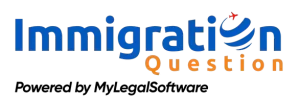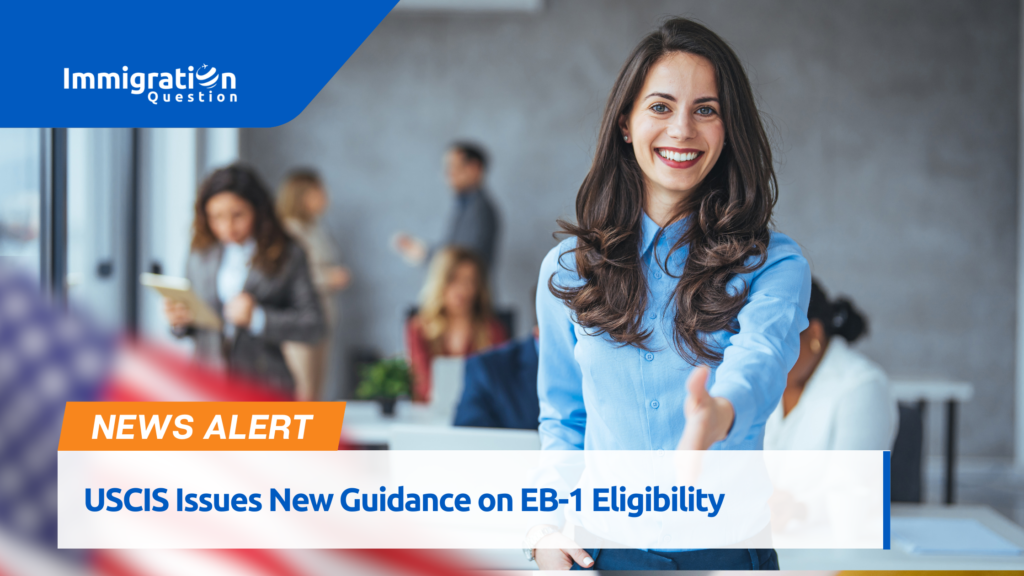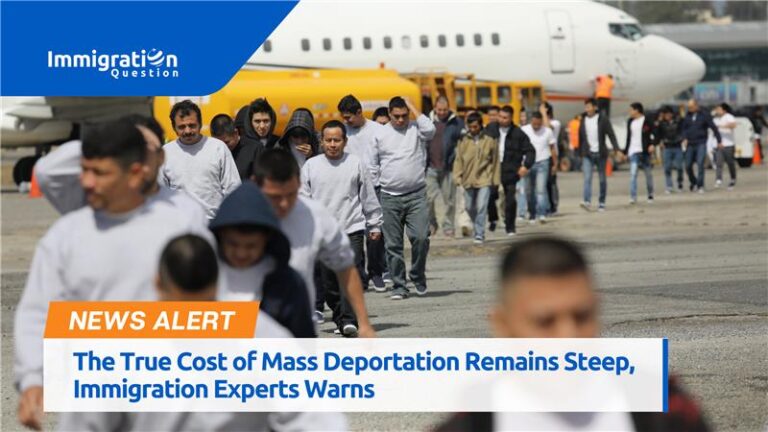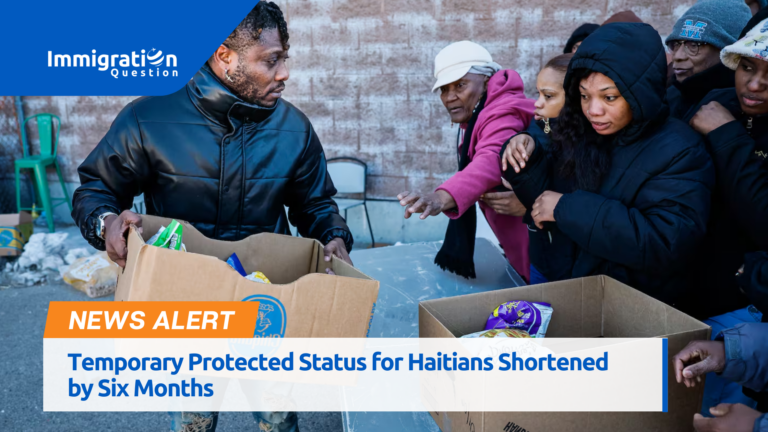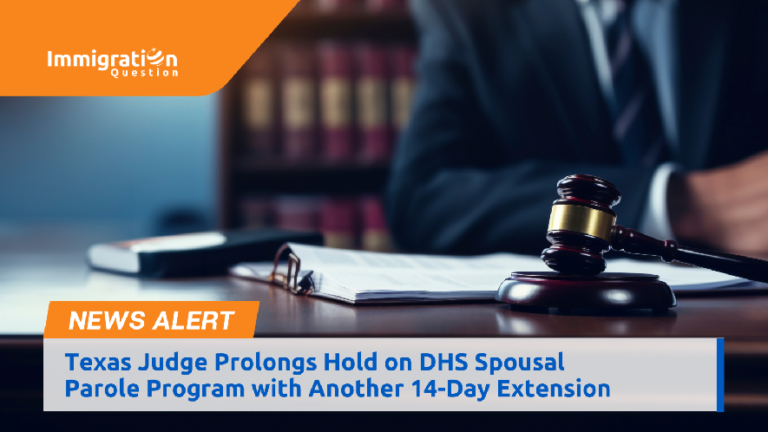USCIS Issues New Guidance on EB-1 Eligibility
On October 2, 2024, the U.S. Citizenship and Immigration Services (USCIS) announced significant updates to its New Guidance on EB-1 Eligibility, specifically for individuals seeking classification as having extraordinary ability. The changes, which are part of the ongoing efforts of the USCIS to streamline immigration processes and ensure greater transparency, have far-reaching implications for high-skilled immigrants, employers, and legal representatives steering the EB-1 application process.
What is the EB-1 Visa?
The EB-1 visa, also known as the Employment-Based First Preference Visa, is designed for individuals who possess extraordinary ability in their field of expertise, outstanding professors or researchers, and certain multinational executives or managers. Specifically, the EB-1A category focuses on individuals who can demonstrate sustained national or international acclaim in areas like science, arts, education, business, or athletics.
It is considered one of the fastest routes to obtaining permanent residency in the U.S., as applicants do not need a labor certification from the Department of Labor, which is required for many other employment-based green card categories.
Key Updates to EB-1 Eligibility Criteria
The recent updates made by USCIS are intended to clarify the evidence required for demonstrating extraordinary ability, and several adjustments have been made to how applicants can present their qualifications under the EB-1A classification.
-
Recognition of Team Awards
One of the major revisions involves how team-based awards are evaluated. USCIS will now consider an individual’s role in winning a team award under the criterion of receiving a lesser nationally or internationally recognized prize or award for excellence.
This update allows more flexibility for applicants who have been part of large-scale projects or groups where individual contributions were integral to the team’s overall success, but the award was given to the team rather than to any specific individual.
-
Clarification on Memberships
Another area USCIS clarified is related to professional memberships. Under the old guidelines, an individual could submit evidence of membership in an association requiring outstanding achievements. The updated policy explicitly clarifies that past memberships will also be considered when evaluating this criterion. This is important for individuals who may have held prestigious memberships earlier in their careers but no longer hold those roles.
-
Published Material Requirements
The update removes language suggesting that published material must explicitly demonstrate the value of the applicant’s work or contributions in the field to satisfy the published material criterion. The previous requirement placed a burden on applicants to provide detailed explanations or validations for each piece of published content. The new guidelines simplify this, reducing the need for comprehensive documentation about the significance of each publication.
-
Exhibition of Work
The USCIS guidance revises the interpretation of the term exhibition. Under previous guidelines, there was some ambiguity around whether exhibitions needed to be artistic in nature. The updated guidance clarifies that the term exhibition refers to a public showing, but in cases of non-artistic fields, USCIS will only consider these as part of a properly supported claim of comparable evidence. This adjustment aims to make it easier for professionals in non-artistic fields, such as scientists or business leaders, to demonstrate their extraordinary ability.
How Does This Affect EB-1 Applicants?
These updates bring much-needed clarity to the EB-1 process, offering applicants more defined pathways to proving their extraordinary ability. For highly skilled professionals, particularly those in collaborative or interdisciplinary fields where individual contributions may be harder to isolate, the recognition of team awards and expanded consideration of memberships are especially beneficial.
The removal of stringent publication requirements also reduces administrative burdens, allowing applicants to focus on providing high-quality evidence without needing to justify the significance of each individual publication or award. Additionally, individuals whose contributions span non-artistic disciplines, such as engineers or business professionals, will benefit from the refined definition of exhibitions, which allows for more relevant evidence submission.
Looking Forward: The Impact of USCIS’s New Guidance on EB-1 Eligibility
New Guidance on EB-1 Eligibility, which take effect immediately, will likely result in more streamlined petitions and quicker adjudications for applicants who have the requisite qualifications.
By broadening the types of evidence that can be submitted and clarifying the standards for judging extraordinary ability, USCIS has made it easier for highly skilled professionals to navigate the process. The changes also bring the policy in line with modern workplace dynamics, recognizing the collaborative nature of many industries and allowing applicants to showcase their contributions even when part of larger teams.
However, it remains to be seen how these guidelines will be interpreted in practice by USCIS officers, as there is still some degree of subjectivity in evaluating extraordinary ability. Legal Attorneys recommend staying informed about evolving interpretations of the guidelines as more petitions are processed under the new criteria.
